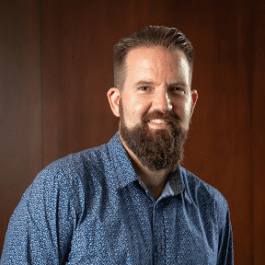The importance of continued professional networking

Conventional ways of networking – from in-person conferences and professional association gatherings to face-to-face interactions – have been significantly reduced over the last few months.
However, that does not mean we should reduce or even stop our professional networking initiatives – we just need to adapt them to the new environment(s).
As Joanna Shea, Founder at 3P Energy Consultants points out “COVID-19 has reduced our ability to have frequent face-to-face interactions for the time being, but it has not diminished the need for students or alumni from continuing to build strategic relationships (your network) that are mutually beneficial.
“These relationships are the ones that will lead to introductions to hiring managers and project directors or role recommendations that align with what you are looking for.”
Shea’s comment is a great reminder that even though we may still continue to be physically distanced from one another, we do not (and should not!) need to put our career aspirations on hold.
So what are some good ways to network when in-person connections are few and far between?
How do you network effectively during this unprecedented time?
Use LinkedIn to boost your professional networking efforts
Over 122 million users have been invited to an interview through LinkedIn and 35.5 million have landed a job through someone with whom they are connected. LinkedIn is definitely a key networking resource that should be utilized. But where’s a good place to start?
An easy win for connecting with others is to look to MEL and MHLP alumni, as well as other UBC alumni. Our graduates can also visit the MEL, and MHLP exclusive alumni pages, which combined have 300 MEL and MHLP alumni! Beyond that, visiting UBC’s LinkedIn page will enable you to search for UBC alumni with a LinkedIn account. You can then also add in additional search criteria and filters that could include geographic area, areas of study, companies where alumni currently work and the types of industries you may be interested in.
This tactic can also be used when moving beyond attempts to connect with alumni to connecting with industry professionals. Visit a company’s LinkedIn page and click on the People section. From there, select the criteria that will help you identify professionals working in your area of interest. It is truly a great way to drill down on specific criteria and identify people who could be key connections.
Don’t forget about who you already know, have worked with and are connected with
Another avenue to explore, and that should definitely not be forgotten, is reconnecting with your existing network. Your previous coworkers, supervisors and mentors are key connections, as they operate in your industry and know you in a business context. They may also be important sources of information about the latest issues within your industry and able to share knowledge about how your industry is adapting to the new realities and contexts of the last five months.
Times like this are also a great reminder of the importance of building and cultivating your professional network throughout your career, in good times and bad. Your network connections can potentially protect you from the consequences of layoffs, downsizing and furloughing.
As Todd Pittman, CEO of Anexinet, recently mentioned in an article on The Enterprisers Project, “[d]on’t make the mistake of finding yourself in the market for a job and realizing you’ve neglected your network. Given the demands of our professional and personal lives, it’s worth taking the time to cultivate and maintain our connections.”
Attend a virtual event – and then reach out
Earlier this year, Forbes published an article that indicated that virtual events were up 1,000% since COVID-19. That increase can create a tremendous opportunity to continue to build your network.
Although you may not be able to acquire the attendee list, obtaining the speaker, panel and company names lists can be quite easy as this information is generally published as part of the event. When attempting to connect with these individuals, typically the best tactic is emailing them (if possible) or messaging them on LinkedIn a day or two after the event, Engage with them by asking their opinion on something that they discussed or was discussed by someone else during the virtual conference.
Aim for Success
How many times have you attempted to connect with a key industry professional, a recruiter, a hiring manager or another potential contact on LinkedIn, only to never receive a response?
It can be a bit disheartening when something that we are really hoping for does not materialize into a positive outcome.
That’s why it’s worth taking a bit of time to think about what would motivate the person you are contacting to respond to you.
Shea indicates that “[a]s much as I’d like to say otherwise, never assume that a stranger wants to help a stranger online. If you cannot find a person in common to warmly e-introduce you, have your value proposition, or your “hook” in place and lead with that.” She also encourages you to consider the following questions:
- Why are you contacting them?
- What value do you add?
- How can you help them?
- Why should they help you?
Remember, don’t look at this an opportunity to make this about you. Really consider why the person you are reaching out to should respond, and show that you care in your message, as people may be more sensitive to that given the pandemic.
Beyond that, ensure your message captures the fundamental five “Ps” for writing a great message, which is that it should be polite, pertinent, personalized, professional and praiseful.
Ensuring that you have a well-connected, well-established and well-maintained professional network could be the one of the single best strategies to not only potentially guard against economic crises, but also potentially enable your career path to be much more satisfying and rewarding.
Featured Alumni

Justin Krzanowski
Justin Krzanowski is integrating the leadership and health-care knowledge he acquired over the course of his MHLP in Seniors Care to lead a team tasked with developing and implementing discharge policies and procedures from the acute care setting.
Stay informed
Subscribe to receive information about our employer programs and upcoming employer events.
Subscribe

